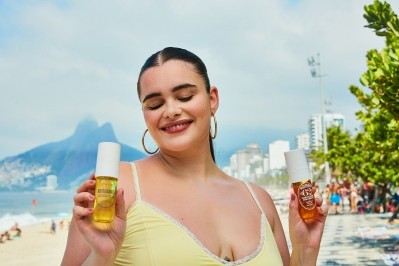Better regulatory processes needed for safe, sustainable cosmetic use of nanomaterials in sunscreen, makeup: Expert review

Nanotechnology is considered one of the most revolutionary and promising areas for developing enhanced and novel cosmetic products, and has seen significant advancements and widespread use in cosmetics and dermatology. Due to NMs’ various physical and chemical properties, they can provide cleaner, lighter and stronger surfaces and structures.
For instance, they have a larger contact surface that allows for longer-lasting, more efficient impact and are already widely used in products such as sunblock and sunscreen — they make the product optically transparent and provide protection against UV radiation. In makeup, NMs contribute to longer-lasting colours. These qualities have led to scientists using NMs to create novel technologies and delivery systems.
However, there are also potential safety concerns about their application, which may be addressed by determining their type, stability, skin absorption potential, exposure route, and formulation into cosmetic products. To guarantee their safe use, cosmetic products that contain NMs must comply with European regulatory provisions, especially the European Commission (EC).
As such, researchers at the University of Coimbra, University of Beira Interior, State University of New York and University of Campinas conducted a review of the particularities of NMs, their influence on human health, challenges with environmental sustainability, and strategies to integrate policies with the aim of normalising their application in cosmetics.
Detailed assessment
The review covered several nanomaterials commonly used in cosmetic products, such as titanium dioxide (TiO2), methylene bis-benzotriazolyl tetramethylbutylphenol (MBBT), tris-biphenyl triazine (TBPT), nano carbon black (CI 77266) and silica nanoparticles.
In the case of TiO2, it is used as a UV filter in its nanoform against UVA and UVB radiation, making it effective in sunblock. Its nano size also means it is effective in making cosmetic and skincare products — such as lip balm and cream sunblock — easier to spread and appear transparent on the skin.
However, the review noted that EC’s Scientific Committee on Consumer Safety (SCCS) “does not recommend the use of TiO2 (nano) as an ingredient in spray products due to the possibility of accumulation in the lungs after inhalation”. Its use is therefore prohibited in products that present any inhalation risk.
Similarly, MBBT and TBPT are approved as UV filters in sunblock, skin lightening products and other daily care products. The SCCS has stated that “there is no concern for the dermal application” of products containing MBBT or TBPT, and either NM “can be used in concentrations up to 10%”. But since there is limited information on their inhalation toxicity, “caution should be exercised with this type of exposure”. The EC has therefore determined that neither MBBT nor TBPT can be used in products that could result in inhalation.
CI 77266 is a colouring ingredient commonly used in make-up products like foundation, eyeliner, eyeshadow, mascara, eyebrow products and nail enamel. According to the SCCS, “the concentration of this ingredient can vary between 0.001% and 10%” depending on the make-up product; in skincare products, its concentration should be limited to 0.001%.
Silica nanoparticles such as silica dimethyl silylate, silane and dichlorodimethyl are used in both rinse-off and leave-on products such as deodorant, toothpaste and sunblock, as they increase the spreadability and effectiveness of such products. In makeup, they are commonly applied in lipsticks to enhance their appearance and pigment distribution, as well as to prevent it from bleeding beyond the lip line.
The SCCS has raised concerns around the potential for silica nanoparticles to “break away from their clusters and enter cells, potentially causing toxicity”. Its current opinion on the safety of these NMs is inconclusive, as both available and submitted evidence have been insufficient in drawing “any conclusion in favour of or against” their safety.
Problems with the process?
The EC makes regulatory decisions based on opinions from the SCCS, which conducts assessments based on information the Cosmetic Products Notification Portal’s (CPNP) notifier provides. However, the SCCS may have trouble making safety conclusions because of insufficient data from applicants or scientific literature.
In fact, 70% of its opinions have not reached “plausible conclusions regarding the safety of the NM, undermining the commission’s ability to move forward with regulatory decisions”. As the SCCS has just six months to formulate an opinion, companies can introduce cosmetic products to the market at the end of this period if the opinion is inconclusive.
The review stated that it was therefore important to improve the CPNP’s notification process — especially regarding the six-month period — and to examine the possibility of extending the current authorisation system on colourants, preservatives and sunscreens containing NMs.
A 2020 study issued by the European Union Observatory for NMs (EUON) and European Chemicals Agency (ECHA) found that almost 90% of respondents (EU citizens) felt it was crucial to be informed when purchasing products containing NMs. Most of them said clear information about NMs in a product would lead them to be more prudent in their buying decisions.
Additionally, there was an association between a negative attitude towards NMs and consumers’ level of knowledge about them. The review stated: “This lack of knowledge could be overcome through communication with users using digital technologies; for example, an electronic label with information on the use of cosmetic ingredients, namely NMs.”
Safety and sustainability
In addition to safety and regulatory compliance, sustainability is a growing concern regarding NM use in cosmetic products. The review noted that there researchers must adopt measures to develop innovative and sustainable cosmetic products, “including the application of natural NMs obtained from renewable by-products, the choice of methods with minimal operational steps” and the use of formulation methods that avoid or minimise the use of harmful materials like toxic solvents.
The review further stated that to guarantee sustainable cosmetic NM use, detailed risk assessments were necessary to minimise their “potential negative impacts on human health and the environment”. At the same time, international organisations responsible for cosmetic regulations must implement guidelines and improve conventional toxicity testing methods in order to ensure there is comprehensive available data on the safety and sustainability of NMs in cosmetics.
Source: Cosmetics
“Nanomaterials in Cosmetics: An Outlook for European Regulatory Requirements and a Step Forward in Sustainability”
https://doi.org/10.3390/cosmetics10020053
Authors: Laura Ferreira, et al.





















